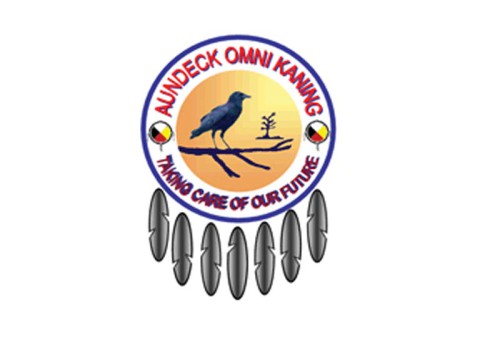AUNDECK OMNI KANING—A unique addictions treatment program that incorporates traditional First Nations elements as well as both addictions and mental counselling, developed by Kinoondidaa’gamig Treatment Home in Aundeck Omni Kaning (AOK), has enough youth on its waiting list to keep its beds full for years, program manager Anne-Marie Corbiere said.
However, the funding is still not there.
The three-month recovery program cycles were supposed to start in March of this year, but without funding from the government and without enough referrals from the Children’s Aid Society, the program couldn’t afford to run.
“Admission to the program is voluntary,” Ms. Corbiere explained. “It is heartbreaking to know there are youth who want to start to battle their addictions and we can offer no help.”
Currently, there’s a several month waiting list for youth who want to start the process of battling their addictions, giving them plenty of time to lose their willpower and return to the drugs or alcohol that enticed them to start with.
“There has been no argument that with the growing trend of addictions amongst youth and the lack of addiction treatment beds in our region that our program would be an asset to assisting the government in addressing the current epidemic,” Ms. Corbiere wrote. She further noted that, “because our program offers addiction and mental health treatment for youth, it appears we do not fit into one of the available ‘funding boxes’ and the government needs time to work out who is responsible for providing funding.”
Kinoondidaa’gamig Treatment Home has functioned in the AOK community since 2006, though the programs were originally created to provide counselling to First Nations youth in foster care. Over the years, however, the staff at Kinoondidaa’gamig has seen the need of its clients shift, and so they have created new programs and adjusted its focus towards addictions treatment.
“During an internal program review we found that 82 percent of the youth attending the program from 2006 to (the time of the study) identified individual addiction issues and 98 percent of the youth identified family addictions issues,” an email from Ms. Corbiere revealed.
Even as youth would complete the programs currently offered by Kinoondidaa’gamig, they would then return home to a culture of addictions and abuse, making relapse much more likely. Teaching youth how to fight off the temptation and develop good habits to replace the bad was important.
The program mixes elements of Western culture, such as educational groups designed to address issues such as anger management, self-harm, suicide and abuse; treatment programs such as the 12-steps, smoking cessation and substance abuse prevention with nature-based activities like camping, swimming, hiking, fishing and canoeing; and First Nations traditions and crafts like drumming, creation of dream catchers, medicine wheel making and more.
“Our staff have taken part in wilderness training through Laurentian Conservatory as well as an in-house two-day training session where they were able to work with the North Shore Search and Rescue and the Ontario Provincial Police Emergency Response Team, that will enable the home to provide regular wilderness programming as part of the treatment. This programming will allow us to use our property and do land-based activities that cost us next-to-nothing while providing you with alternative healthy habits to replace old unhealthy habits,” Ms. Corbiere explained.
“So many of the youth we see here return home to a family situation where the family is battling addictions, too,” Ms. Corbiere notes. “It is our hope that many of the youth will be able to use the skills they learn when they return home and will involve their own family in wilderness activities.”
Right now, referrals to the program, either from the youth themselves, their families, their caregivers or their doctors, are vital for the program’s success. The number of people waiting to access the program helps prove the program is needed in the community, Ms. Corbiere related.
And there is light at the end of the funding tunnel for the program.
Since The Expositor’s first interview in February, “We have had meetings with various people within the Ministry of Children and Youth Services (CYS) and Grand Council Chief (Patrick) Madahbee has had a meeting with Minister Hoskins (MPP Dr. Eric Hoskins),” Ms. Corbiere explained. “We have also been in discussion with the North East LHIN (Local Health Integration Network). The good news is we have not been turned away, but the bad news is that we still do not have funding and we have had do a short term lay off until we begin another treatment cycle.”
Ms. Corbiere said the CYS said there are many youth from across the province who would benefit from the program and it is a matter of determining which area funding would come from.
Anyone looking for more information about this program or wishing to make a referral can visit the Kinoondidaa’gamig Treatment Home’s website at www.aplaceoftalking.com, or phone 705-368-0435.




